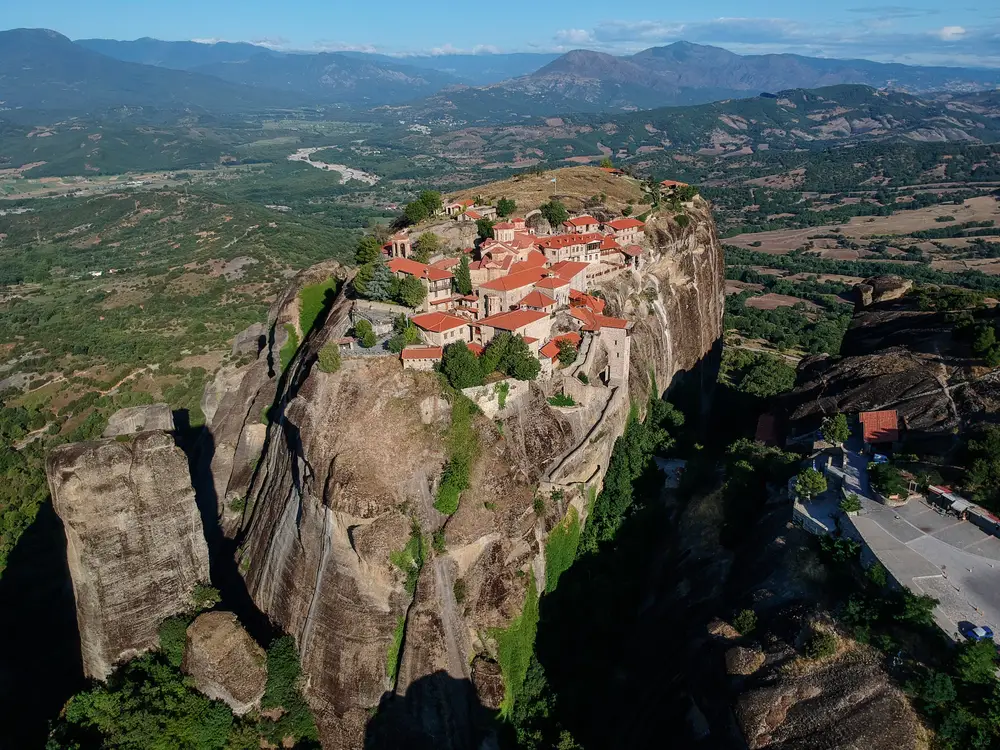Judged by the Cover - Meteora Ep.4
- Josh Wilhelm

- Apr 17, 2023
- 6 min read
Updated: Jul 27, 2024
Today on Judged by the Cover, I am looking at an album cover from one of my favorite albums of all time. It’s not one of the first covers I thought of when I decided to start this podcast, but as I dug into the what and how this cover was designed, I knew we had to talk about it. Also it helps that they just released the 20th anniversary edition of the album…so let’s dive in.
Firstly, if you haven’t already please hit all the like and subscribe buttons, and if you could leave me a review on Apple Podcasts. Positive reviews are always very helpful for the show. Secondly, if you are viewing this on JW’s Notes, you can use the contact form below to tell me what you think of the podcast, and give me your recommendations for future episodes.

Meteora - Linkin Park
Meteora is the sophomore album for the band Linkin Park. After their hugely successful first album, Hybrid Theory, they knew they had a big task on their hands to follow it up. And that they did. Meteora came out on March 25th 2003, and debuted at number 1 on the Billboard 200, and sold over 810,000 copies in its first week! At this point the album has sold about 16million copies world wide and is certified 7 x platinum. Talk about one successful album!
I would love to talk about the music and why I love the band, but that's not why you are here. You want to hear about the album cover. At first glance, you would probably think there is nothing special about this album cover. It’s a sepia colored image on a black background. The image is offset more towards the top of the cover, with a lot of black space below it. Overlaid on the bottom of the image is the band name/logo, the name of the album (Meteora), and then the track list. The image itself is a guy with a respirator mask, crouched down, painting something on the ground with a can of spray paint. The background of the image is kind of non descriptive, but there are paint cans around the guy, and a ladder next to what seems to be a white wall. At first glance there is nothing that stands out to me or really catches my attention, but it definitely has Linkin Park vibes. If you have never listened to Linkin Park I know this probably doesn’t make sense, but give them listen and you will know what I mean.
Before researching the album, or watching the Making Meteora documentary, I always saw this as an image of rebellion. Along the lines of adolescent angst that usually leads to acting out through mediums like graffiti. Also I never really knew or put much thought into who the man in the photo was. It would be easy to assume that this is one of the band members…maybe Mike Shinoda or Joe Hahn (both of which are artists who actually met in art school)…but that is not the case. The person in the photograph is the graffiti artist Delta, or also known by his given name, Boris Tellegen. Boris is a very talented artist who got his start in the graffiti world. His work caught the attention of the band, and they knew they wanted to bring him in.
To go into more detail about how Boris ended up being the one on the cover, and why this
image is so significant…we have to talk about the name of the album and the inspiration that lies within it. The name Meteora comes from a set of rock formations in Greece, that are spectacular in their own right, that also have these monasteries that were built on top of them. The rock formations are amazing to look at, with these shear rocky sides, and it blows your mind to think how on earth did they build these monasteries on top of them! It has this cinematic quality that is reminiscent of something within a fantasy world or movie.
The band felt that the music they were creating had the same qualities. The massive guitar sounds, the range and emotion in the lyrics and vocals, along with the softer piano and electronic sounds tie everything together to create a cinematic force of music.
In the middle of the chaos of recording the album, they took a break to work on this art installation, that would become the visual elements of the album, and possibly the cover. I will put a link below of a video they shot during this time discussing the process. This is where Boris came in to input his artistic ability. They brought in basically the whole band to be involved in painting these four huge panels with imagery, lyrics, photos, and other elements that depict the process of the album coming together. You had 4+ artist, working on a single piece, with very different styles…and they all had to come together to tell the same story.
Within all of this, they also had a photographer grabbing photos of this process. They ended up choosing the cover photo because they said that there was a quiet strength and focus in Boris, in the midst of the chaos of this art installment, that perfectly embodied this album. In the process of creating an album, there are a lot of moving parts. There’s a lot of chaos in demoing, recording, creating a record, but the band was super focused and knew what they wanted the end product to be. This photo was the perfect embodiment of this focus amongst chaos that portrayed their Meteora.
I love that the band had the foresight to document the process of creating the album, so we could have this glimpse of what goes into creating a masterpiece like Meteora. From the outside, what I would have considered to be a terrible choice for the cover of such a great album, really is the best choice to represent it.
If you’re listening/reading this today the one thing you can take away from this album cover, is to know your vision, and find the thing/design/art that communicates that. Some people probably won’t get it, and that ok, but be ready to tell us why that thing works. Find a medium to share that story (blog, social media, or video) to bring your fans and prospective fans in the inside and let them in on the story. These are the things that will create real experiences for your audience, and create true fans of you and your music. Know who you are as an artist, know the story you are portraying through your music, and then partner with the right people to help share that story with your audience. Wether that's working with a talented artist like Boris, or hiring a graphic designer like me…I think every artist and band needs to have an outside voice to help bring their visual elements to life.
Near Miss
That brings us to everyone's favorite section- it's Near Miss time. For today's Near Miss, I decided to give the county artists a break. Our victim for this episode is Aerosmith, and their debut self titled album Aerosmith. There’s a funny story behind this cover that we will get to in a second, but let’s start with describing the cover.

I’m not even sure where to best start with this because there is A LOT going on. The main body of the cover is this cloudy sky image. Think about what it looks like when you are in a plane, looking down at the clouds in the sky below you while you’re flying. On top of that you have a secondary square image of the band in the center…with a similar background behind them…literally just layered on top of the background. At the top is an orange band with the band/album name Aerosmith, and the font is black with white geometric wings on every letter.
This thing is what I would call…..a hot mess! To quote Joe Perry, he said "Unfortunately the packaging was lame. We didn't even see the cover until the first printing. It was something that Columbia just threw together ... The whole thing was sloppy. It marked the start of our education in dealing with (record) labels."
The label just threw this together! Obviously without any thought or care. There was also an issue with the first printing where one of the songs was mis-spelled, instead of Walkin’ the Dog, it said Walkin’ the Dig. This was corrected with a secondary printing, and then they ultimately updated the cover art completely sometime before 1975.

The alternate cover from the 3rd printing is definitely better, but also not great. It used the image of the band that was at the center of the original, with a similar font done differently for Aerosmth in red. Instead of each letter having the white geometric wings, the name Aerosmith has it at the end. Also the alternate cover said “featuring “Dream On” which was the single for the album and had a lot of success. The lesson learned here is don’t immediately trust your label, or anyone to simply throw something together for you. Your album/single is too important to just leave to chance. Especially in todays music world where you are competing with thousands of other songs that are getting uploaded daily.
That's all for todays episode of the Judged by the Cover podcast. Please share this with your friends and family that love music, and album cover design. Also make sure to send me a suggestion of your favorite albums covers, and any examples that need to be discussed in the Near Miss segment.









Commentaires